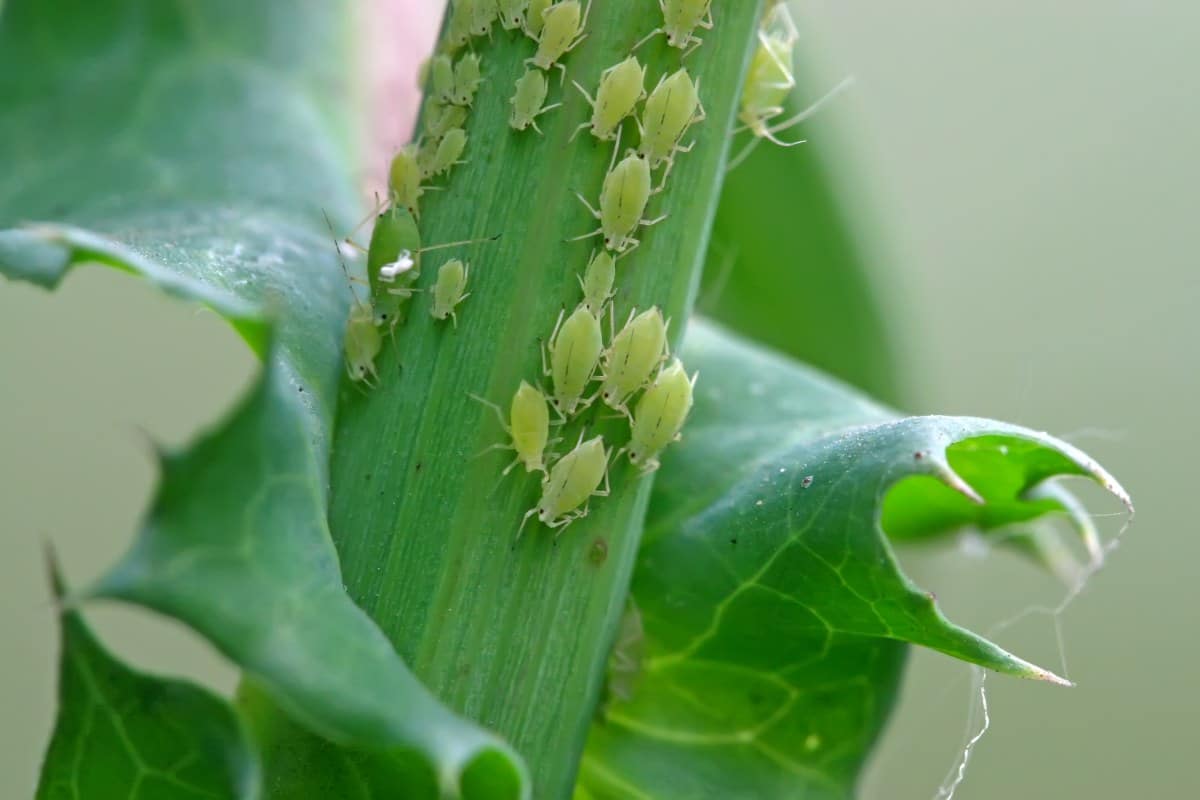
Tackling Aphids: A Comprehensive Guide to Combatting Common Houseplant Pests
Dealing with the Tiny Green Invaders
Ah, aphids—the tiny, sap-sucking troublemakers that can wreak havoc on your cherished plants! These sneaky pests are notorious for their rapid reproduction and ability to damage a wide range of indoor and outdoor plants. As fellow plant lovers, we understand the frustration of nurturing your green space only to have it threatened by these persistent pests. In this guide, we'll help you understand the basics of battling aphids and share effective strategies to kick these uninvited guests out. Let’s dive in and reclaim your plant paradise!
Understanding the Menace
Aphids Unveiled: Aphids are small, soft-bodied insects that come in various colors, including green, black, and yellow. They feed on plant sap by piercing the plant tissue with their needle-like mouthparts, leading to distorted growth, yellowing leaves, and the secretion of sticky honeydew. This honeydew can attract ants and promote the growth of sooty mold. To effectively combat these pests, it’s essential to understand their life cycle and the plants they commonly target.
Identifying Aphids
Spotting the Signs: Recognizing the early signs of an aphid infestation is crucial for swift action. Look for clusters of small insects on the undersides of leaves, new growth, and stems. Other indicators include curling leaves, yellowing, and the presence of sticky honeydew.
The Battle Plan: Early Detection and Quick Response
The key to conquering aphids is early detection and immediate action. Once you spot the first signs, follow this battle plan:
- Pruning: Trim away heavily infested plant parts to reduce aphid populations.
- Rinsing: Use a strong spray of water to dislodge aphids from leaves and stems.
- Natural Predators: Introduce beneficial insects like ladybugs and lacewings, which feed on aphids.
- Organic Pest Control: Utilize insecticidal soap, neem oil, or a homemade solution of water and dish soap. Apply it to affected areas, focusing on the undersides of leaves.
- Isolation: Isolate infested plants to prevent aphids from spreading to healthy plants. Your indoor garden will thank you.
What Kills Aphids Instantly?
While there isn't a method to instantly kill aphids, several effective strategies can help manage and control their population:
- Insecticidal Soap: Use a ready-made insecticidal soap or create a homemade solution by mixing 1 tablespoon of mild dish soap with 1 quart of water. Spray this solution on affected plants, focusing on the undersides of leaves where aphids often hide. The soap disrupts their cell membranes and helps control their numbers.
- Neem Oil: Neem oil is a natural pesticide with insecticidal properties. Mix 2 tablespoons of neem oil with 1 gallon of water and add a small amount of mild soap to help it stick to the leaves. Spray it on the plants, and repeat the application regularly for better results.
- Water Spray: A strong jet of water can help dislodge and remove aphids from the plant. Regularly spraying your plants with water, especially the undersides of leaves, can prevent infestations and reduce their numbers.
- Predatory Insects: Introduce predatory insects like ladybugs or lacewings into your garden. These natural enemies feed on aphids and can help control their population.
- Isolation and Pruning: Isolate the affected plants to prevent aphids from spreading. Prune and remove severely infested parts of the plant, reducing the overall aphid population.
Consistent and repeated application of these methods is crucial for effective control. Additionally, it’s essential to monitor your plants regularly to catch any resurgence of aphids early on.
Prevention and Long-Term Care
Friendly Plants with Hidden Risks: Some seemingly harmless plants might still pose a risk. For instance, the beloved Rose can attract aphids. To ensure your plants stay healthy, be vigilant and research potential risks even with seemingly safe greenery.
FAQ: Common Questions About Aphid Control
How often should I apply neem oil?
Neem oil should be applied every 7-14 days, depending on the severity of the infestation. Consistency is key for effective control.
Can I prevent aphids with companion planting?
Yes! Some plants, like garlic and marigolds, can repel aphids. Consider planting these near susceptible plants as a preventive measure.
What should I do if the infestation doesn’t improve?
If you’re not seeing results, consider increasing the frequency of your treatments or combining different methods, like pruning and introducing predatory insects.
Conclusion
A Call to Action: Now armed with knowledge and a battle plan, it’s time to protect your green space. Share your aphid stories or tips in the comments below. Together, let’s create a community of plant enthusiasts supporting each other in the fight against these tiny invaders. Your plant paradise awaits—let the battle begin! 🌿✨
Citations
- Planet Natural: Aphids are small, soft-bodied insects that feed on plant sap, leading to distorted growth and yellowing leaves. Read more
- Canr: Aphids can secrete honeydew, attracting ants and promoting the growth of sooty mold.
- Green Harvest: Pruning infested plant parts, rinsing plants, introducing natural predators, and using organic pest control methods can help manage aphid populations.
- The Spruce: Insecticidal soap, neem oil, water spray, and predatory insects can be used to control aphids. Read more
- Study: Consistent and repeated application of control methods is necessary for effective management. Read more
- Gardening Chores: Some plants, like Roses, can attract aphids. Read More
By understanding the signs and taking proactive measures, you can effectively manage aphid infestations and keep your plants healthy and vibrant.



